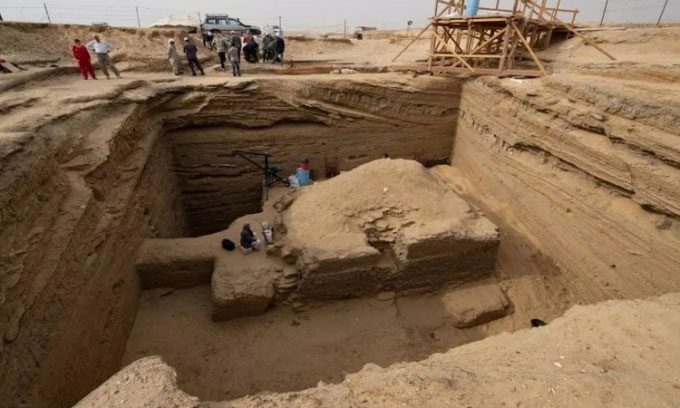Archaeologists Unearth the Tomb of an Ancient Egyptian General Who Led Mercenaries from Asia Minor and the Aegean Islands

The tomb of General Wahibre-mery-Neith. (Photo: Egyptian Ministry of Tourism and Antiquities)
A team of experts from the Czech Institute of Egyptology at Charles University in Prague has identified a tomb in Abusir belonging to a general named Wahibre-mery-Neith. The tomb dates back to the early 5th century BC, and inside, researchers discovered the largest embalming chamber in Egypt, containing 370 ceramic jars used for the embalming materials of the general, according to a statement released on July 15 by the Egyptian Ministry of Tourism and Antiquities.
The Tomb of Wahibre-mery-Neith measures 14 x 14 meters. At the bottom of the tomb, nearly 16 meters deep, there is a set of sarcophagi that had been previously destroyed by tomb robbers. The outer sarcophagus is made of two massive limestone blocks. The anthropoid coffin inside measures 2.3 meters long and 1.8 meters wide, intricately carved with a human face in fine stone and inscribed with texts from the Book of the Dead, depicting the general’s resurrection and journey to the afterlife.
The excavation team did not find the mummy of the general, but they did uncover two wooden boxes containing 302 clay figurines created for the deceased’s use in the afterlife. The findings also included several jars of floral plaster, 10 cups, and limestone vessels inscribed with religious texts known as ostraca.
The excavation concluded in June 2022 in Abusir, a UNESCO World Heritage site located between Giza and Northern Egypt. Wahibre-mery-Neith lived during the period of Persian conquest in Egypt, which began around 525 BC and lasted for 100 years. The tomb provides researchers with greater insights into the life of the mercenary commander, who likely died suddenly before his tomb and burial items were fully prepared.





















































